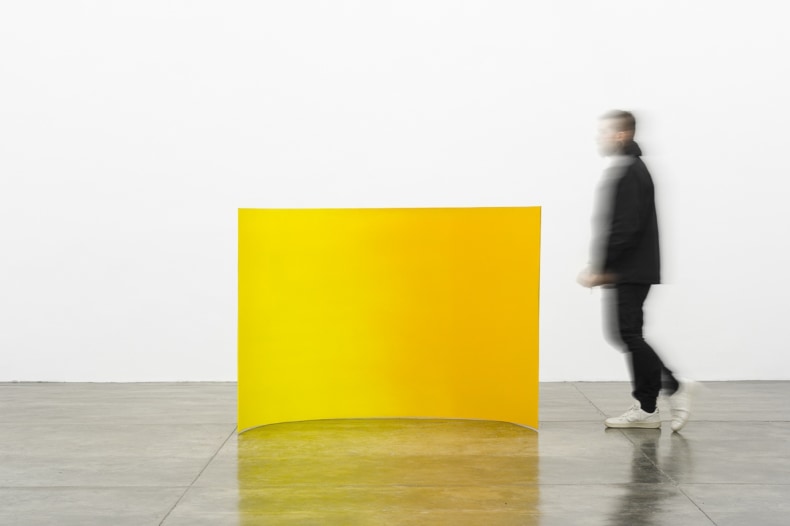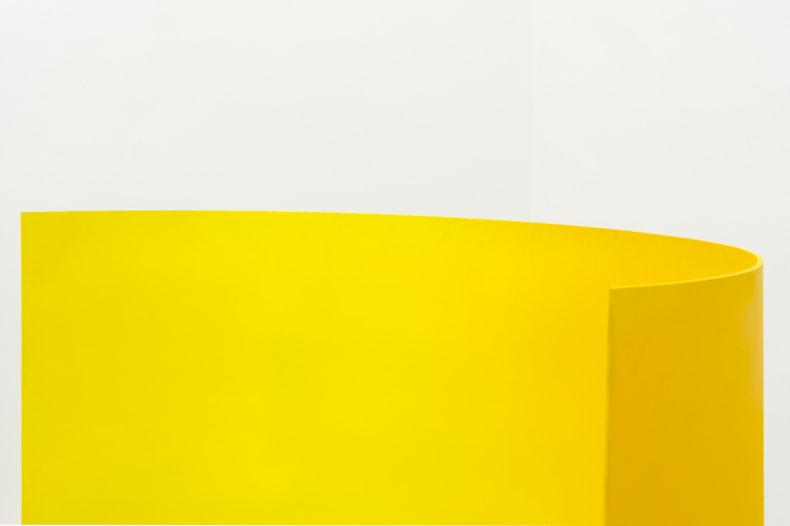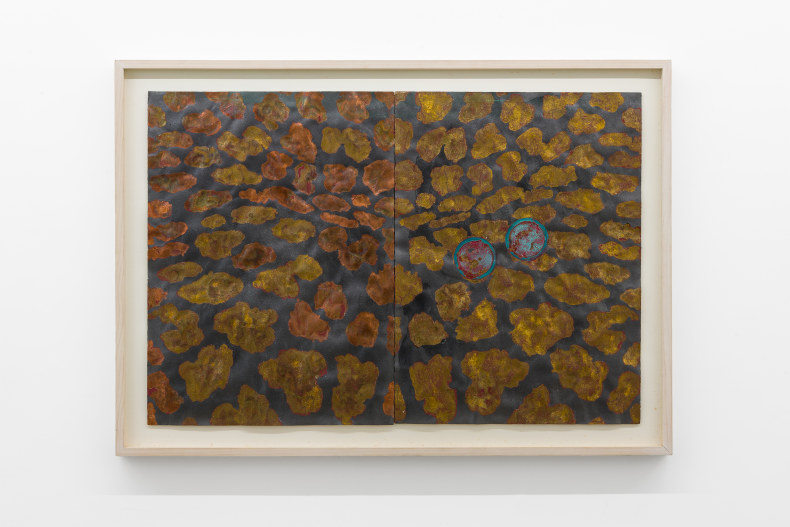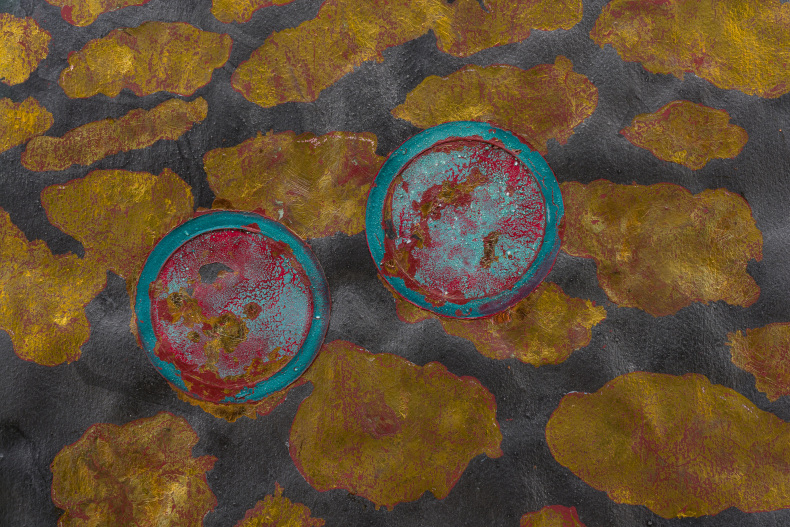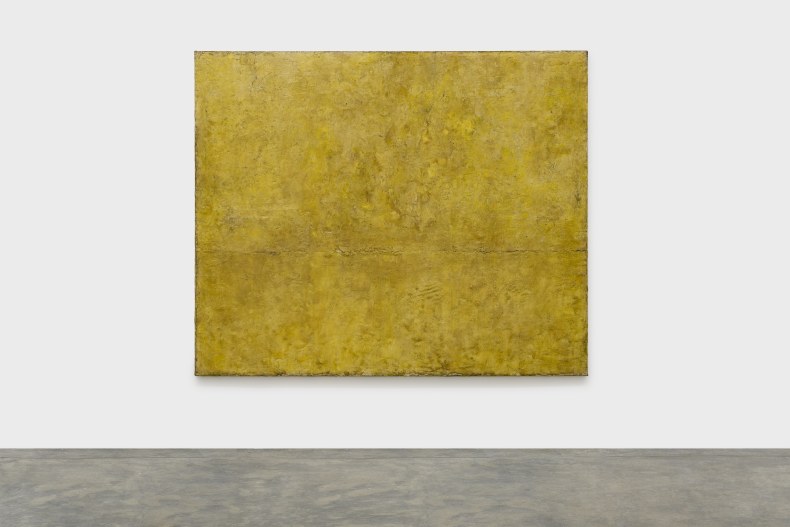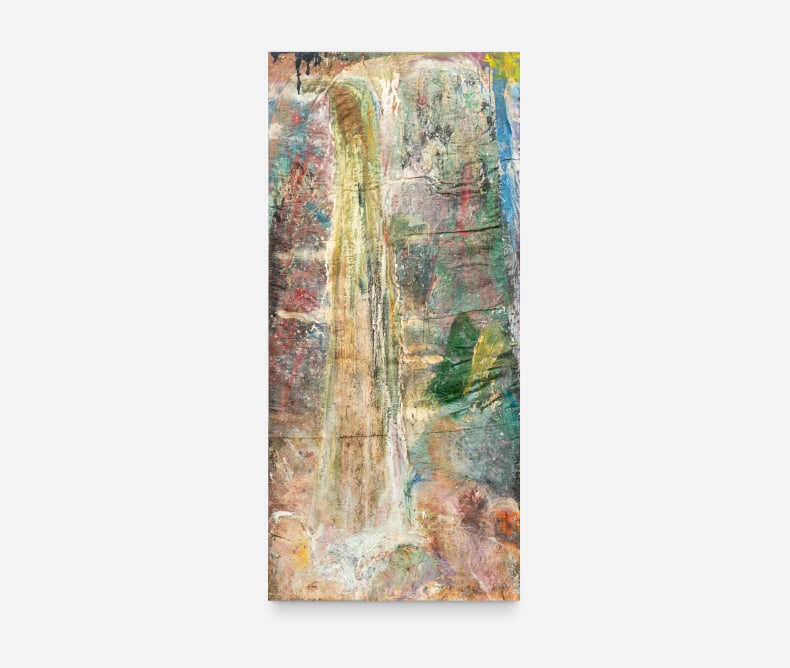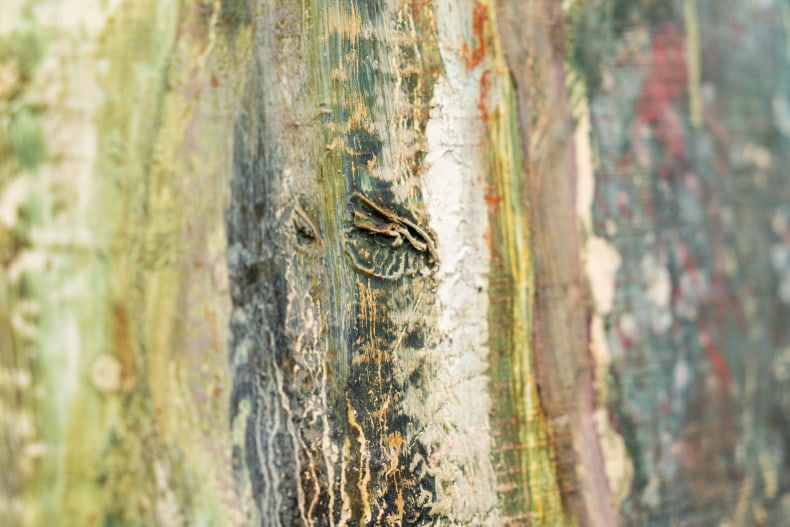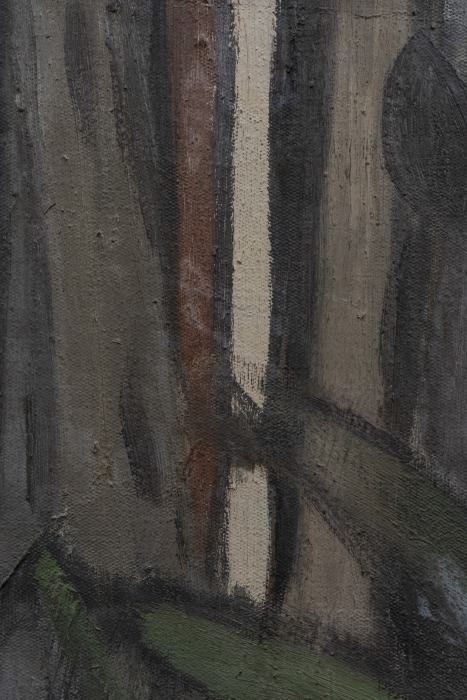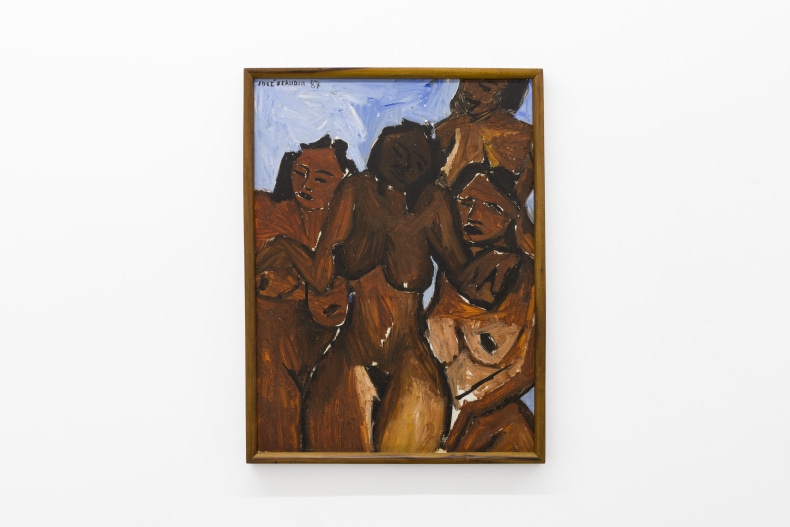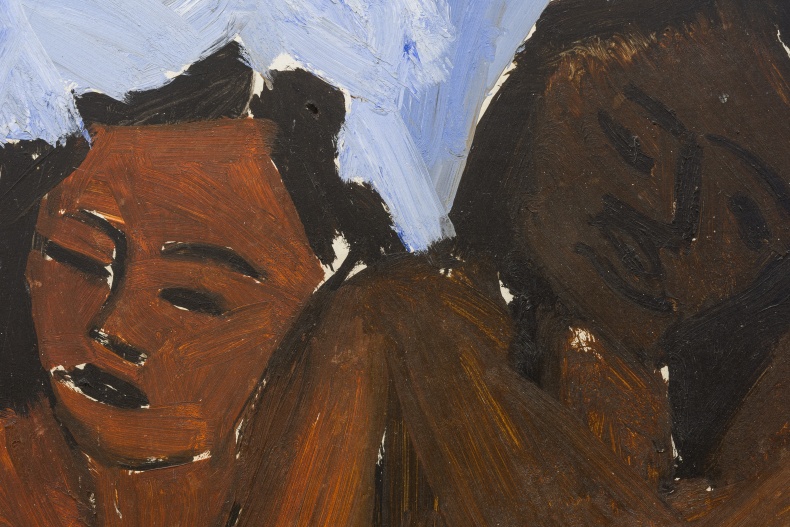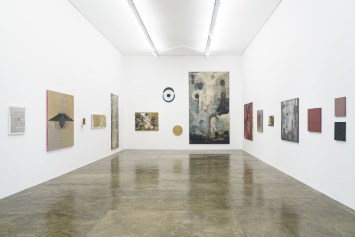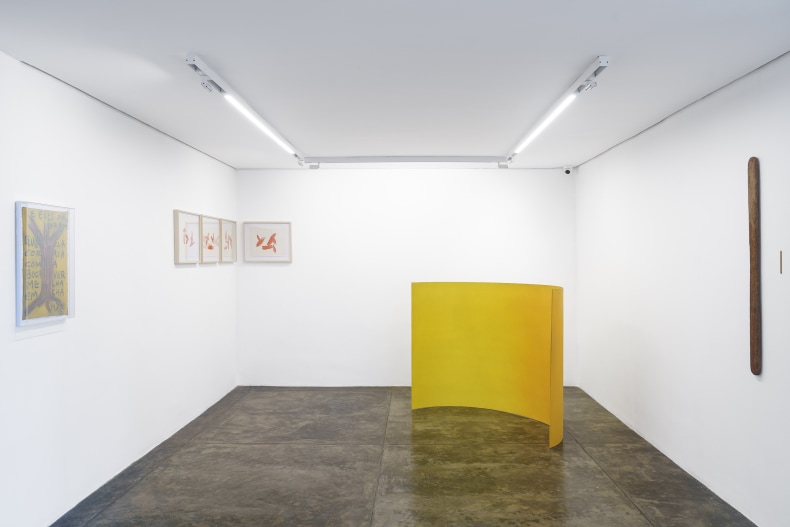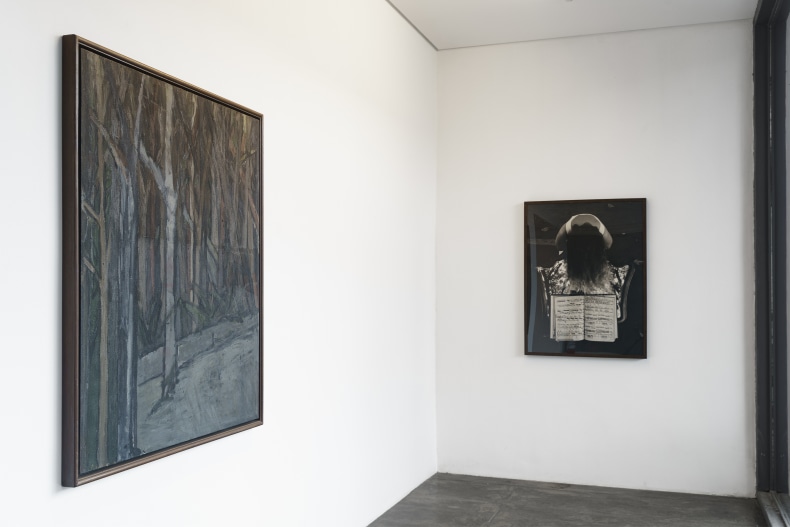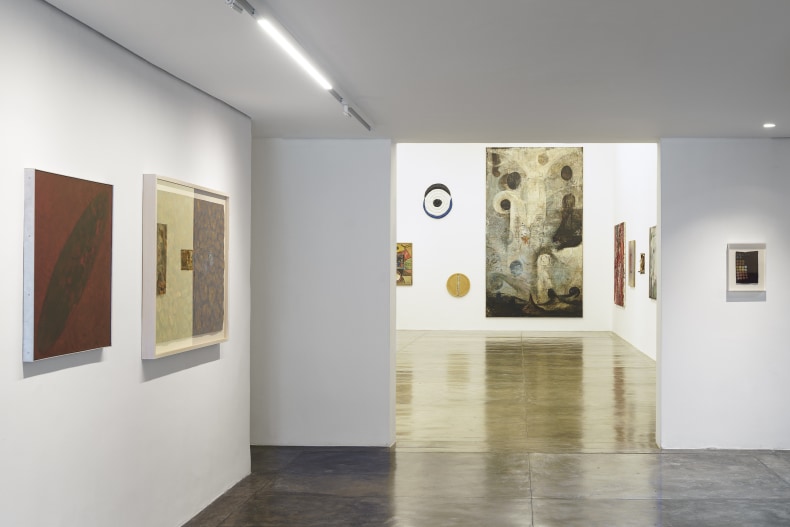Nara Roesler São Paulo is pleased to present Affective Spins, curated by Luis Pérez-Oramas. The exhibition features works by 20 artists from this period: Amelia Toledo, Angelo Venosa, Antonio Dias, Cao Guimarães, Carlito Carvalhosa, Carlos Zílio, Cristina Canale, Daniel Senise, Fabio Miguez, José Claudio, Karin Lambrecht, Leda Catunda, Leonilson, Marcos Chaves, Paulo Bruscky, Rodrigo Andrade, Sérgio Sister, Tomie Ohtake, and Vik Muniz.
Although this period in Brazilian art was marked by a resurgence of painting, especially through the so-called Geração 80 (Generation 80), the exhibition showcases works across various media, including watercolors, drawings, sculptures, and embroidery. One notable aspect is the influence of German Neo-Expressionism, visible in the paintings of Fabio Miguez and Carlito Carvalhosa, who worked together at Ateliê Casa 7 during this period. The dark palette and cartoon-like elements reflect their inspiration from figures like Markus Lüpertz, Philip Guston, and Jean-Michel Basquiat.
References to nature are also present in some works, such as Antonio Dias’s piece from the early 1990s, where he explores energetic circuits using graphite, copper, and malachite. Similarly, Angelo Venosa’s 1994 work experiments with bovine teeth and lead, expanding the possibilities of plastic art. In the realm of abstraction, the exhibition highlights the formal and chromatic explorations of Tomie Ohtake and Amelia Toledo. While Ohtake experimented with mixing acrylic paint and water to produce misty, suggestive effects, Toledo resumed her painting practice after a long hiatus, focusing on chromatic compositions and their relationship with the canvas.
In the words of Luis Pérez-Oramas:
"Between turns and affections, even while sharing the same historical moment, even appearing identical, the artists and their works are unique and unrepeatable. Each inaugurates a specific temporality—a heterochrony where exclusion and affection, memory and mind, coexist."
